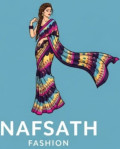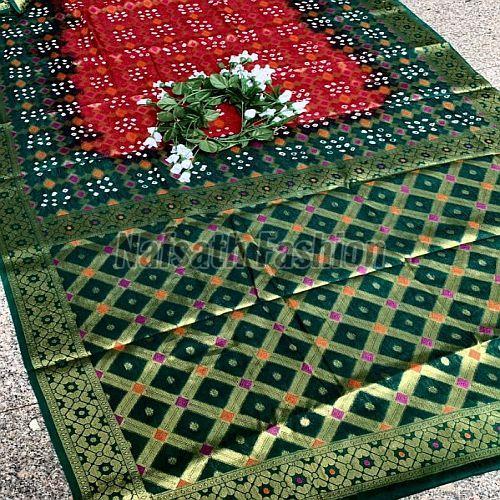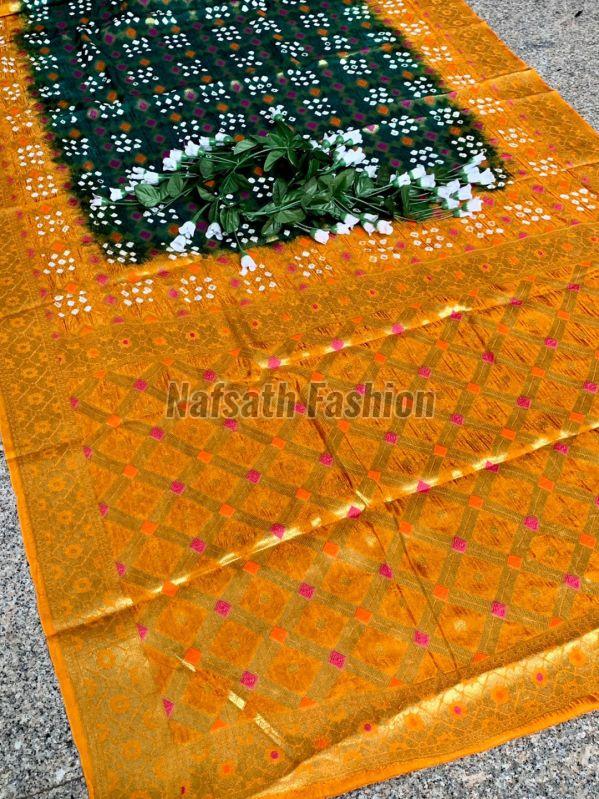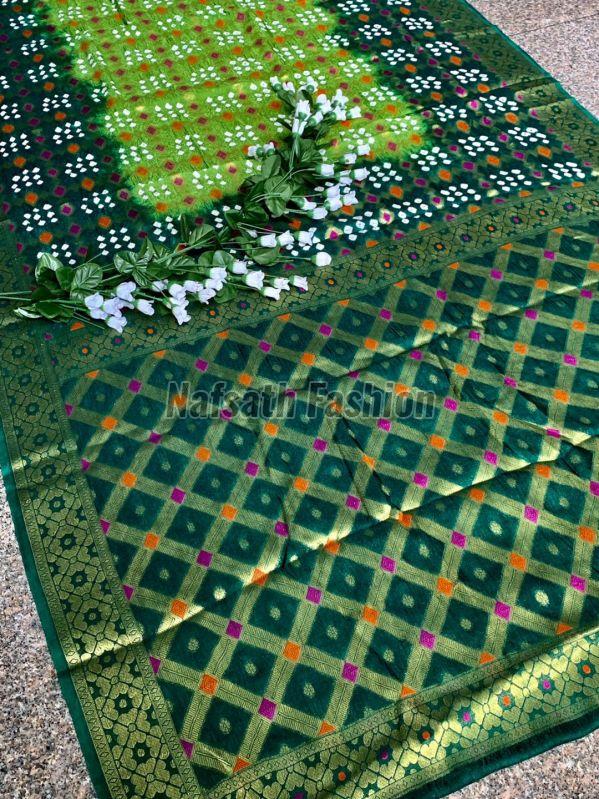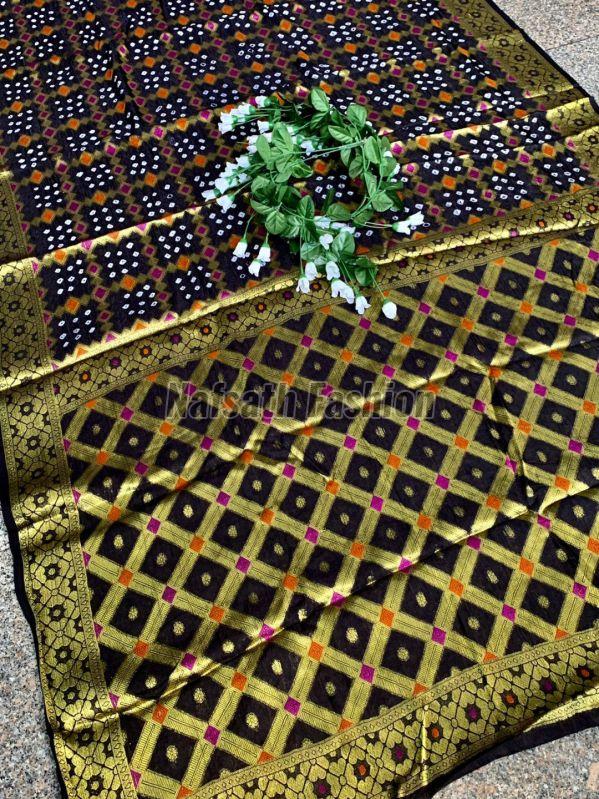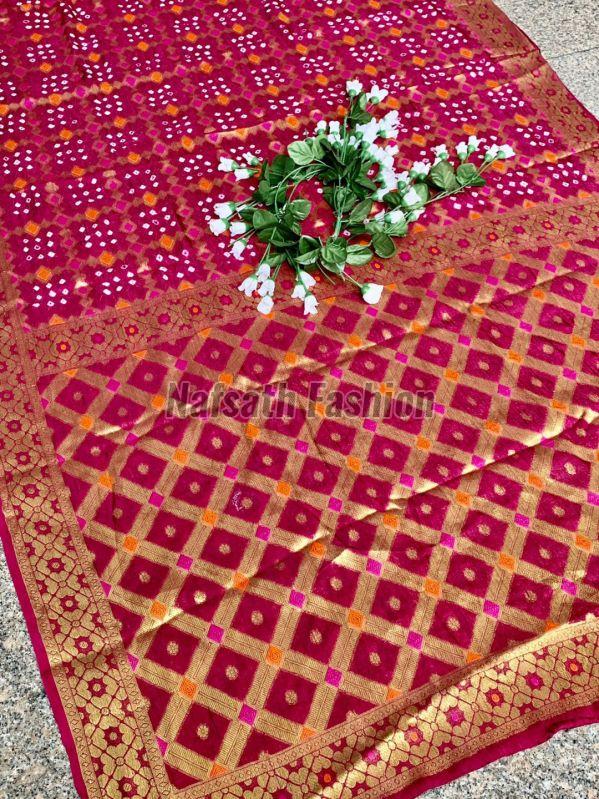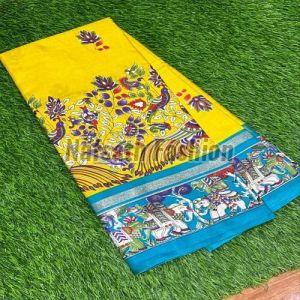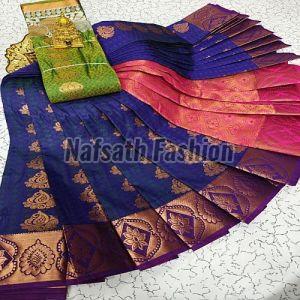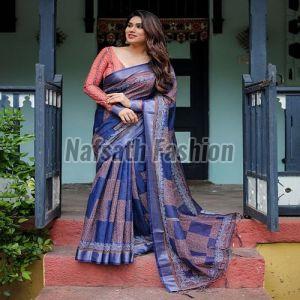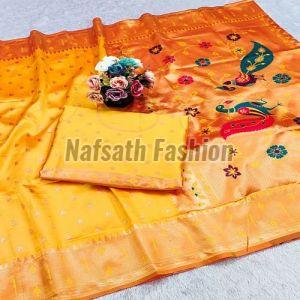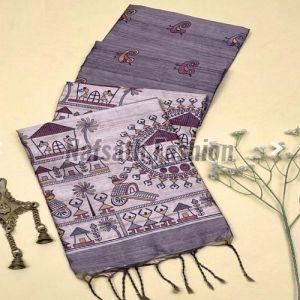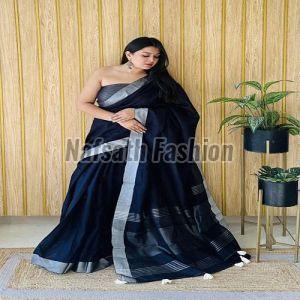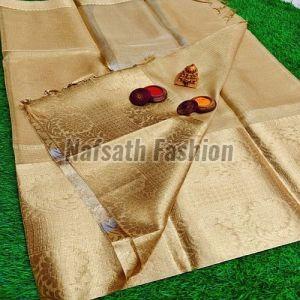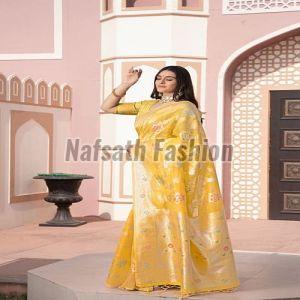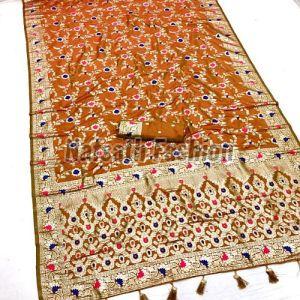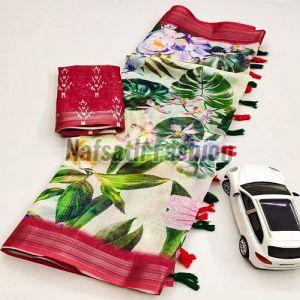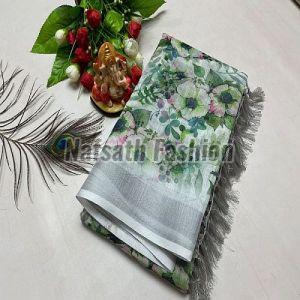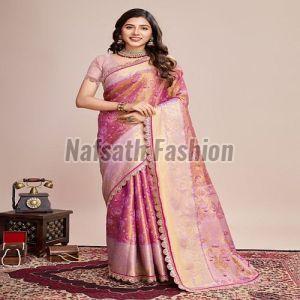GST NO. : 33BGNPN4798L1ZJ
| Business Type | Exporter, Supplier, Retailer, Trader |
| Wash Care | Machine Wash |
| Ethnic Region | Indian |
| Speciality | Easy Wash, Shrink-Resistant |
| Click to view more | |
Product Details
Blouse Stitch Type
Unstitched
Set Content
With Blouse Piece
Pattern
Printed
Work Type
Zari Work
Fabric
Bandhani Silk
Color
Available in different color
Saree Length
6.3 Meter
The most distinctive feature is the meticulous process of tying small knots all over the fabric before dyeing. Skilled artisans use their fingernails to pinch and tie the fabric tightly.
- Intricate Patterns: A variety of patterns are created depending on how the fabric is tied. Common motifs include dots, circles, squares, waves, and stripes. Traditional designs often have names like Ekdali (single dot), Trikunti (three knots), Chaubundi (four knots), and Dungar Shahi (mountain-shaped).
- Vibrant Colors: Bandhani fabrics are typically dyed in vibrant colors such as red, yellow, blue, green, and black. Natural dyes were traditionally used, but synthetic dyes are also common now.
- Lightweight Fabrics: Bandhani sarees are often made on lightweight fabrics like cotton, silk, georgette, and chiffon, making them comfortable to wear.
- Cultural Significance: Bandhani sarees hold cultural significance, particularly in Gujarat and Rajasthan. They are often worn during festivals, weddings, and other auspicious occasions. In some communities, the color of the Bandhani saree indicates a woman's marital status.
- Regional Variations: Different regions have their unique styles and patterns of Bandhani. For instance, the Bandhani from Kutch and Saurashtra in Gujarat is particularly famous for its intricate detailing and vibrant color combinations.
Looking for "Zari Work Bandhani Silk Saree" ?
Piece
